- News
- Reviews
- Bikes
- Components
- Bar tape & grips
- Bottom brackets
- Brake & gear cables
- Brake & STI levers
- Brake pads & spares
- Brakes
- Cassettes & freewheels
- Chains
- Chainsets & chainrings
- Derailleurs - front
- Derailleurs - rear
- Forks
- Gear levers & shifters
- Groupsets
- Handlebars & extensions
- Headsets
- Hubs
- Inner tubes
- Pedals
- Quick releases & skewers
- Saddles
- Seatposts
- Stems
- Wheels
- Tyres
- Tubeless valves
- Accessories
- Accessories - misc
- Computer mounts
- Bags
- Bar ends
- Bike bags & cases
- Bottle cages
- Bottles
- Cameras
- Car racks
- Child seats
- Computers
- Glasses
- GPS units
- Helmets
- Lights - front
- Lights - rear
- Lights - sets
- Locks
- Mirrors
- Mudguards
- Racks
- Pumps & CO2 inflators
- Puncture kits
- Reflectives
- Smart watches
- Stands and racks
- Trailers
- Clothing
- Health, fitness and nutrition
- Tools and workshop
- Miscellaneous
- Buyers Guides
- Features
- Forum
- Recommends
- Podcast
feature
The rising cost of cycling — when will this crisis stop!?
Cycling has always been a relatively costly sport, but recently it has seemingly become more ridiculous than ever. In the UK, inflation remains near a 40-year high; but can that justify the increase in the prices of bikes and bike components?
To answer this question, we’ve taken a look at some high-end bikes, entry-level bikes, and component prices since 2009 (which happens to be the year that I started cycling properly) to find out.
It’s not uncommon now for some of the best road bikes on the market to cost the same as a nice car, with many premium models costing in excess of £10,000. More worryingly perhaps, up until now, brands have seemingly had little trouble selling them. At the same time, entry-level bikes have evolved massively, often with price tags to match.
> Is this the most expensive road bike you can possibly build yourself?
The Bicycle Association actually found that the average price of bikes being sold has risen a rather staggering 26% since 2019; but as we'll see in a minute, prices were on the rise well before the pandemic, so despite manufacturers' best efforts it can't be fully blamed.
Specialized S-Works Tarmac
First up we'll take a look at the Specialized S-Works Tarmac, the bike of choice for many men’s and women’s World Tour teams.
The S-Works, being at the top of Specialized range, has never been a cheap bike. Back in 2009, when the Tarmac was in its SL3 iteration, it was priced at a fairly hefty RRP of £5,499.
Since then, the average inflation has been around 4% and given this percentage increase we would expect the Tarmac in its latest iteration (the SL7) to garner a price tag of around £8,800.
In reality though, this is not the case. It actually now comes with a five-figure price tag of £11,500, gaining £1,000 in the last year alone! Who knows how much an SL8 could be priced at, but we wouldn’t mind betting that it will be a fair chunk more than the outgoing version.
The top end has been always been expensive, but not quite this unobtainable for many.
Trek Madone
This isn’t just a dig at Specialized though, as lots of other brands are well and truly on the bandwagon. Next let's take a look at the prices of the Trek Madone, a long-standing bike in the US brand's range.
In 2009 a range-topping Madone 6.9 would’ve cost you £5,000, but will now set you back an eye-watering £13,800 for the latest SLR model. Sticking just with the rate of inflation, the price would still been four figures, costing around £8,000.
A lot of the blame for these dramatic price increases gets put firmly on the pandemic. Combine that with a boom in bike sales and you get a lot of demand and not much supply, which certainly does have an impact on rising prices. However, as you can see from Trek’s price increases long before Covid, we find that slightly hard to stomach.
> Trek Madone SLR - The most aero bike in the Tour de France?
Unfortunately, we're not in a position to say whether the latest Madone SLR is worth all that money, as we're still waiting on one to arrive at the office for review. One thing for sure, is that the hole doesn't come cheap...
We’ve trawled through tons of brands and models and in general, always find the same story. We challenge you to find us a bike that has only increased at the rate of inflation since 2009, so let us know in the comments section below if you find one.
Lower end bikes
So we’ve ascertained that brand's flagship models appear to have received a premium tax, but what about less premium models? These are, after all, the bikes being bought by people new to the sport and perhaps more reluctant to drop the big bucks.
The first road bike that I could properly call my own, like many people my age, was a Giant Defy 2 just like the one pictured above. Let's look at how the price of that has changed over the last decade or so...
Giant Defy 2
> How to buy your first road bike — everything you need to know
In 2009 the Defy 2 was certainly deemed a decent entry-level bike, with a price tag of around £800. Using the same calculations as previously, it should now cost around £1,300 due to inflation.
In actual fact, the Giant Defy Advanced 2 (2022) is now priced at over £2,000 – an RRP of £2,299 to be precise. Can this go on or is cycling pricing itself out of its own market? Golf is certainly starting to look like a much more competitive alternative (I don't like golf though).
These increases haven’t just been seen with bikes, so let’s have a look at some groupsets for some more pricey equipment.
SRAM Red
First, let’s take a look at SRAM red. When the first generation was released in 2008 (shown below) it would have set you back £1,399, and should now be priced at around £2,200 due to inflation.
> Head to head: Shimano Dura-Ace R9150 Di2 v SRAM Red eTap AXS
With nearly the same percentage increase at the Trek Madone, the latest generation of SRAM red eTAP AXS will actually set you back £3,349.
> Is a new SRAM groupset on the way?
We’re worried to see what the new rumoured Red groupset will cost in 2023.
So, top end groupsets seem to have gone the same way as high end bikes (i.e upwards...A LOT), but what about lower-end equipment?
Shimano 105
> 5 things we hate about Shimano 105 Di2
Shimano’s 'privateer' groupset 105 has certainly changed over the years, but still claims to offer top-tier performance for the masses.
Back in 2009 and sitting firmly under the £500 mark, Shimano 105 5600 (shown below) had an RRP of £459.95. Since then, 105 has of course gone fully electronic and rim brakes have been chucked in the bin, bringing electronic shifting to Shimano's third-tier groupset.
> Shimano 105 R7100 Di2 Groupset review
Shimano 105 R7100 Di2 raised plenty of eyebrows and emptied plenty of wallets when it was released with a price tag of £1,730. The world’s most popular groupset might not be the everyman’s groupset anymore!
Comparing this to the price that 105 would now cost due to inflation alone and there's nearly a £1,000 difference between the predicted price of £733 and the actual RRP of £1,730. 105 was doing so well until 2022!
Alas, our cries may have been heard. Just this week we reported that a mechanical, 12-speed 105 could be in the works which will hopefully have a much more affordable price tag.
Other kit
We haven’t got any pretty graphs when it comes to clothing, as it’s much harder to find prices of now-defunct items. Brands also rarely keep a range going for over a decade without doing something drastically different.
What we can say is that it appears to be the same story yet again. In recent years we’ve had not just some, but regularly test clothing such as bib shorts over £200, and jerseys costing nearly the same.
dhb, just like back in 2009, is a prime example of excellent value cycle clothing; but I remember paying around £30 for my thermal bib tights not oh-so-long ago. A quick gander on the Wiggle website indicates that a set of thermal longs are now more likely to cost you in the region of £60 at RRP, around double what they were in 2009.
What’s next?
Looking at these examples, it would definitely appear that cyclists are getting worse value for money than we were in 2009; and as we've had it pointed out to us, there are a host of reasons beyond the industry's control that could have contributed to that, with Brexit cited as a big reason for extra price rises on top of inflationary ones here in the UK. Even so, what do we think is likely to happen to the cost of cycling in 2023?
The post-pandemic demand for two wheels has certainly slowed, so we would hope to see bike prices finally stagnate. We also predict that the final fall-out from the supply distribution of the pandemic could be over-supply with bike manufacturers, with Giant already saying it has a surplus. This means that we could expect to see bikes on sale whilst they try and get rid of stock, bringing the prices down from those over-inflated RRPs. We can hope anyway!
That being said, the demand for e-bikes is only going to get bigger, so expect this to be an area that bucks the trend.
In the meantime, we're a big fan of sourcing second-hand bikes, especially if you're prepared to do your own maintenance and get them running as good as new again. This is not only great for your wallet but also has positive environmental repercussions.
Have you felt the strain of the increasing cost of cycling? Tell us your examples in the comments section below.
In the original version of this article, we incorrectly stated that Merida reported a surplus of inventory. We can clarify that a Merida executive denied this is the case, also telling Channel NewsAsia that Merida has not sought to delay payments to its suppliers.
Jamie has been riding bikes since a tender age but really caught the bug for racing and reviewing whilst studying towards a master's in Mechanical engineering at Swansea University. Having graduated, he decided he really quite liked working with bikes and is now a full-time addition to the road.cc team. When not writing about tech news or working on the Youtube channel, you can still find him racing local crits trying to cling on to his cat 2 licence...and missing every break going...
Latest Comments
- Mr Blackbird 1 hour 28 min ago
A lot of large SUV drivers seem to be fat. Maybe owning a large, wide car makes them feel slimmer. A bit like buying their clothes from Jackamo (...
- Dnnnnnn 56 min 39 sec ago
It is sad for the individuals concerned but (and this is a general point, rather than specific to this story), we're much better off overall for...
- No Reply 1 hour 47 min ago
I agree with Pogacar regarding social media. The likes of Facebook, Instagram have done untold damage, especially to the minds of young people....
- David9694 1 hour 52 min ago
Lorry carrying 25 tonnes of beer catches fire on the M11...
- No Reply 1 hour 56 min ago
If you're a cyclist on a road you are public enemy number 1.
- Rendel Harris 2 hours 25 min ago
He advocates only riding mountainbikes solely offroad for ultimate safety, which is great if you're a millionaire of leisure living in Colorado...
- ktache 2 hours 57 min ago
That looks like a fun bike. Frame only, 2 and an 1/2 grand.
- wtjs 3 hours 53 min ago
Fair enough, personal experience may trump (not that one) theory. However, the bonking I have experienced has been due to lack of carbs. Your point...
- Rendel Harris 5 hours 20 min ago
mdavidfrodo?
- wtjs 8 hours 59 min ago
in the UK we have policing which to a greater or lesser extent relies on assistance from members of the public......


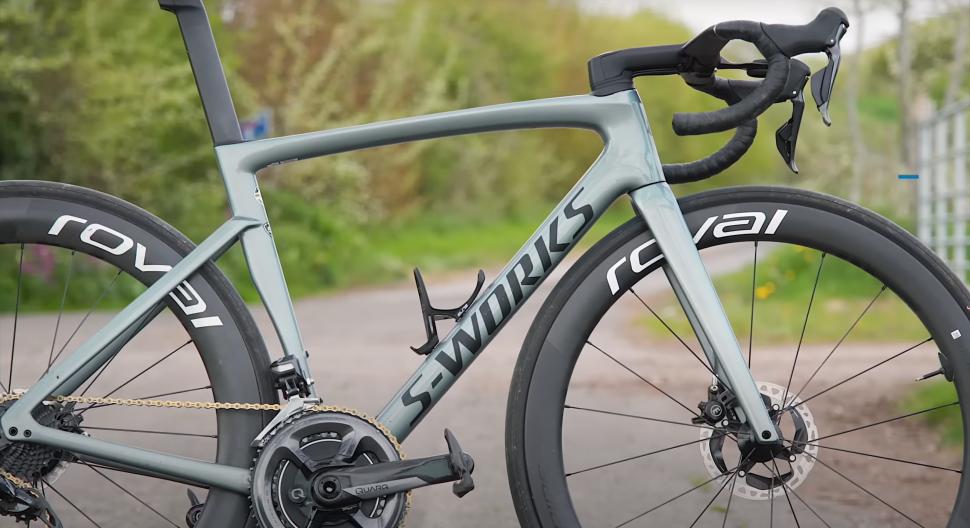



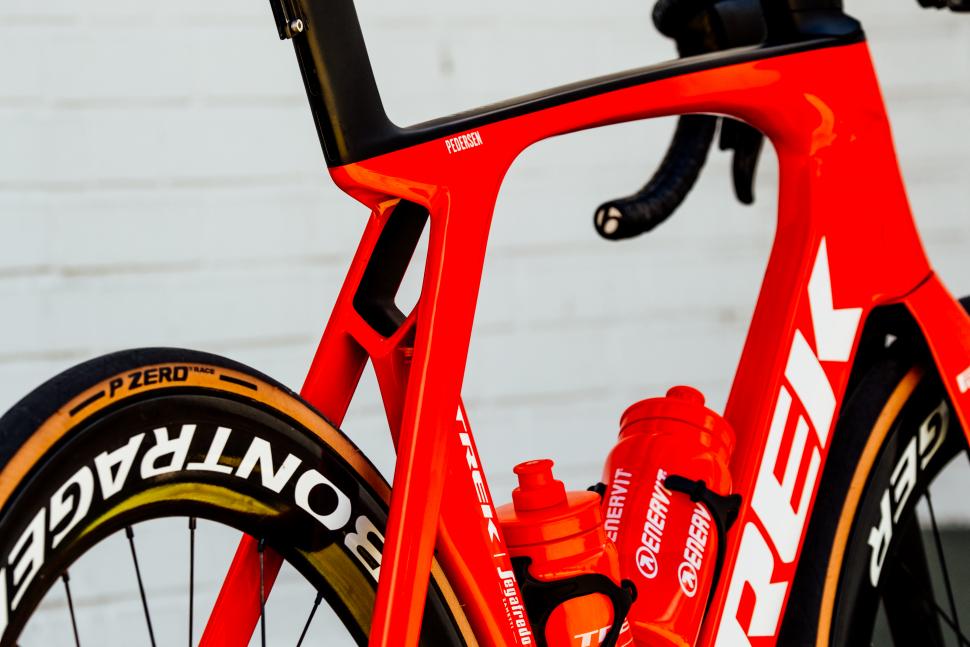

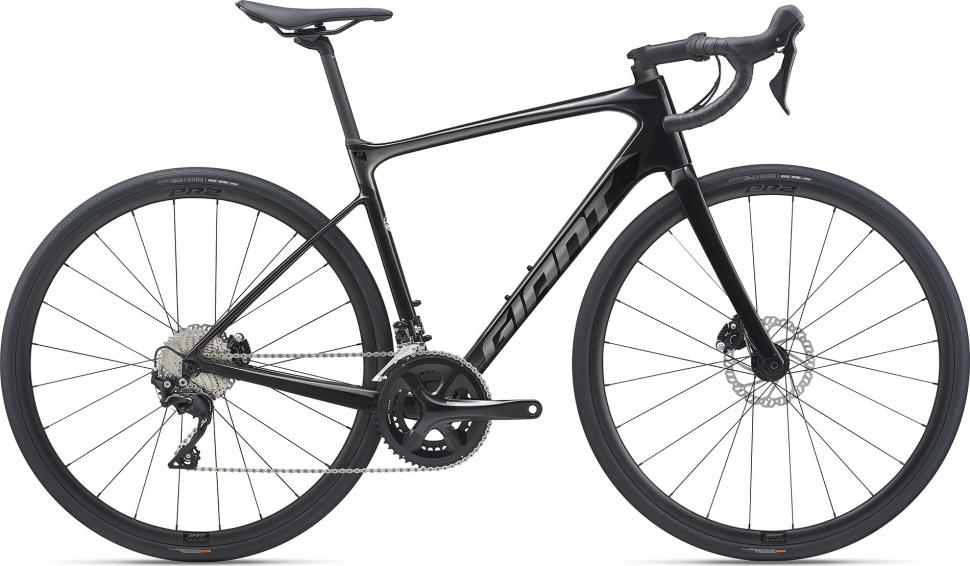

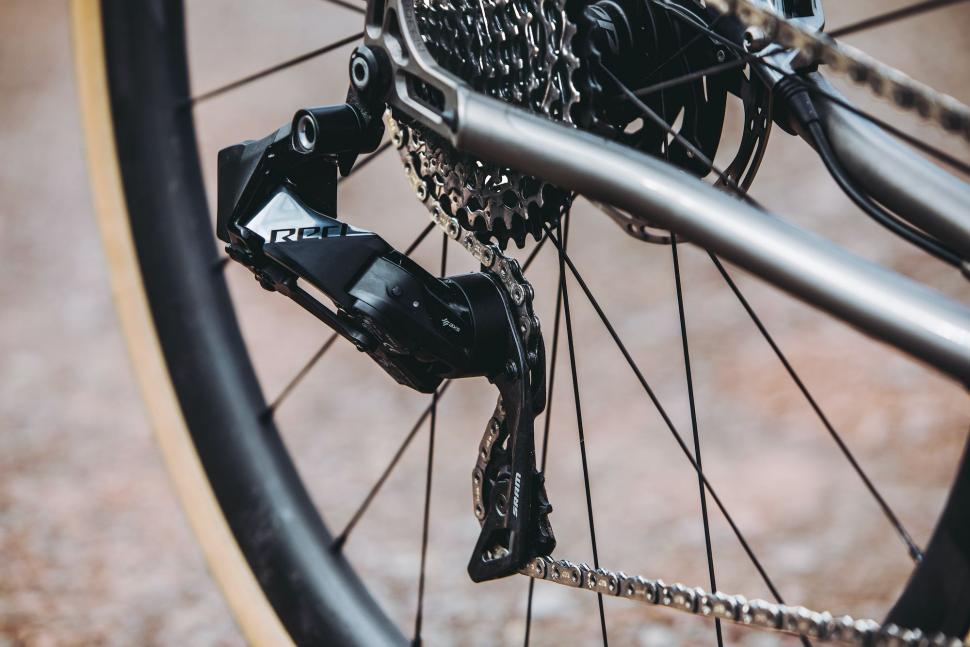




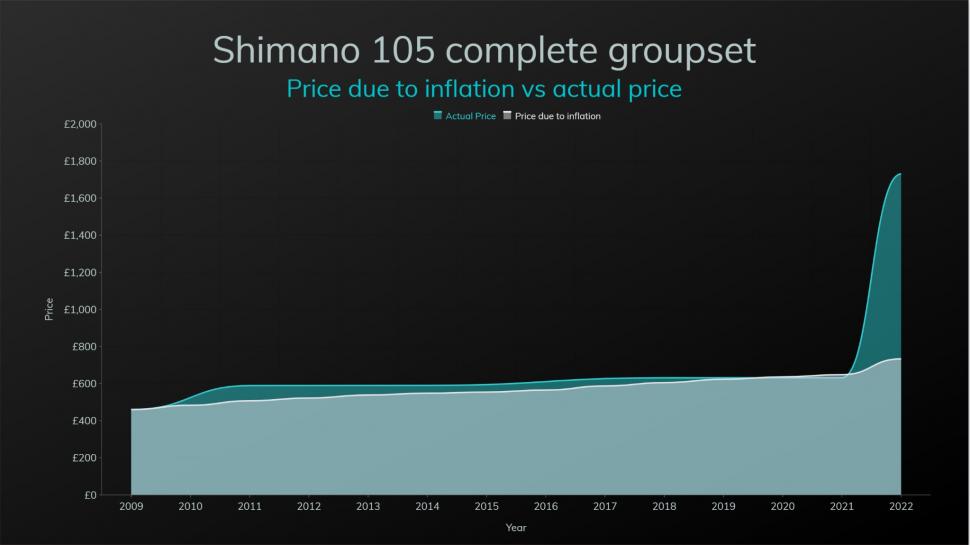




Add new comment
41 comments
It's the old saying: 'Strong [or in this case, durable]. Light. Cheap. Pick two.'
There are an increasing number of cheap(er) wheels being made that, on paper at least, seem very hard to differentiate from much more expensive rivals. One would hope that the more expensive models will be more robust and last longer.
If you're willing to BYO (build your own) it's still possible to get an affordable bike. Go with Tiagra - or even Claris - and source parts secondhand. The secondhand market is absolutely saturated at the moment. Know which brands spec the same frame from Claris to Dura-Ace, have a decent set of easily convertible wheels and you can build a high-end bike for low-end money.
Ultimately, if you're willing/able to do the spannering yourself and prepared to shop around for used/discounted parts you can end up with something built exactly to your spec and which is unique, if that matters to you. For example, I built an XC bike recently with a brand new 853 steel frame & Deore 5100 for just over £1k. My current road bike (ally Domane, Ultegra/105 with mid-range Fulcrum wheels) cost £850 and I've still got the complete Claris group and stock wheels/tyres I took off ready to stick on a pub bike if I want.
I recently bought a lightly-used Lemond with 105 10-speed and Bontrager bits for £150!
Bit of a daft comparison, R7000 105 (11 speed mechanical with rim brakes) is £599 RRP (when if it had gone up in line with inflation it would be £671) and Wiggle and Chain Reaction both have it on offer at £299 at the moment. Not many things I can think of that are currently available for around 65% of their 2009 price...
It could be worse:
https://www.theguardian.com/uk-news/2023/jan/09/entrenched-car-culture-l...
A lot of manufactured outrage! It's still perfectly possible to buy good new kit which is better than comparable items were 20-30 years ago at prices which are probably lower in real terms. Of course, if you want to move up from steel/ alu then it's going to cost more, as is moving from excellent Sora 9-speed to 12 speed electronic. Only 3 months ago I bought an excellent folder for £450 with hydraulic discs and 9-speed which is excellent, apart from the fact you can't get tyres for it. Get cheap clothing and lights from Aldi- that's really good as well. It's not a crisis, apart from the collapsing economy due to Brexit/ Tories and the £billions lost by Truss and Kwarteng with their 'pay the rich more and it will trickle down to the peasants' lunacy. The relentlessly falling £ will make things more expensive over the years, but the crises facing the world do not involve bikes!
I was reading a review last night on a new Assos winter top, £610!!!
I know Assos has never been cheap, but that is extracting the piss big time.
The y axes on those graphs look a little creatively scaled.
It is an interesting statistic, but I have just bought a new Marin gestalt x10 for 900£ and a few pairs of bibs below 10£ a pair. Both the bike and bibs are excellent- so maybe this is just the high end stuff getter more expensive! Also,crc has the excellent 105 group set for 360€ - I have never seen even the older versions being cheaper than this, and that is without taking inflation into account.
They'll just charge what the market can bear. Now they've seen what people are willing to pay for electronic gears and disc brakes it would appear that the sky is the limit!
Meanwhile you can still buy high end aluminium wheels for £350, 105 mechanical rim brake groupsets for £300, good framesets for upwards of £750...
You can probably still build a very nice fast bike for £2k if you wanted but no whirring gearshifts and no disc brakes...
The likes of YTers Trace Velo and Harry Mac show that you can do exactly that - using Chinese brands.
Pages